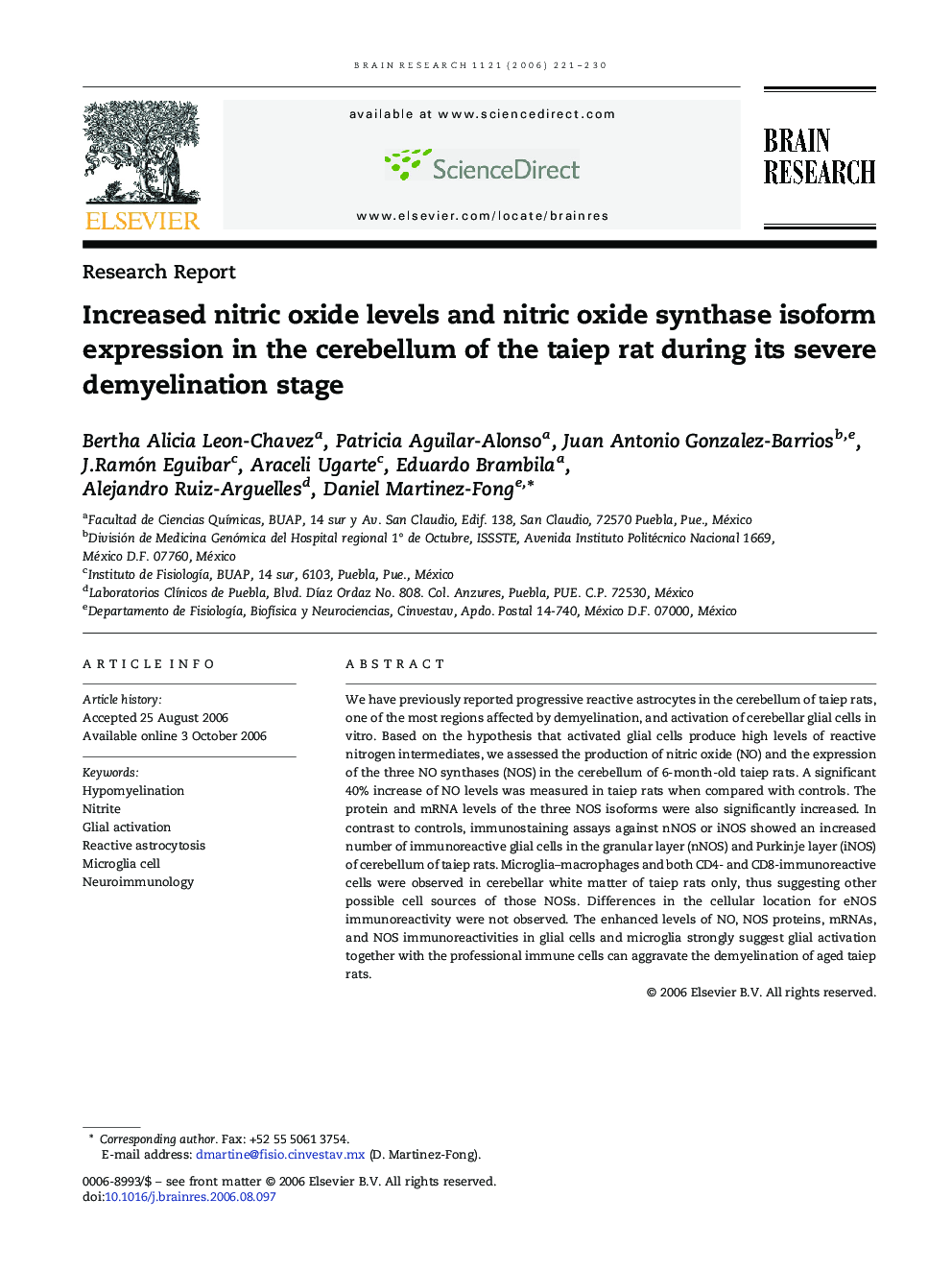| Article ID | Journal | Published Year | Pages | File Type |
|---|---|---|---|---|
| 4331983 | Brain Research | 2006 | 10 Pages |
We have previously reported progressive reactive astrocytes in the cerebellum of taiep rats, one of the most regions affected by demyelination, and activation of cerebellar glial cells in vitro. Based on the hypothesis that activated glial cells produce high levels of reactive nitrogen intermediates, we assessed the production of nitric oxide (NO) and the expression of the three NO synthases (NOS) in the cerebellum of 6-month-old taiep rats. A significant 40% increase of NO levels was measured in taiep rats when compared with controls. The protein and mRNA levels of the three NOS isoforms were also significantly increased. In contrast to controls, immunostaining assays against nNOS or iNOS showed an increased number of immunoreactive glial cells in the granular layer (nNOS) and Purkinje layer (iNOS) of cerebellum of taiep rats. Microglia–macrophages and both CD4- and CD8-immunoreactive cells were observed in cerebellar white matter of taiep rats only, thus suggesting other possible cell sources of those NOSs. Differences in the cellular location for eNOS immunoreactivity were not observed. The enhanced levels of NO, NOS proteins, mRNAs, and NOS immunoreactivities in glial cells and microglia strongly suggest glial activation together with the professional immune cells can aggravate the demyelination of aged taiep rats.
